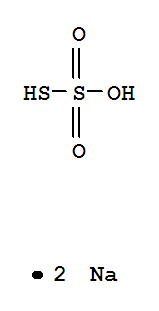10.1134/S107042720707018X
The study investigates the reaction products of 1,2,4-trimethylbenzene (1,2,4-TMB) with chlorine dioxide (ClO2) in aqueous solution. The primary purpose of the study is to understand the transformation pathways of 1,2,4-TMB under the influence of ClO2, which is significant in the context of water disinfection and the reduction of secondary toxicants. Chemicals used include 1,2,4-TMB as the organic substrate, ClO2 as the oxidizing agent, sodium chlorite (used to prepare ClO2), hydrochloric acid (reacted with sodium chlorite to produce ClO2), and sodium thiosulfate (to deactivate excess ClO2). The study serves to explore the potential water pollutants' transformation in petrochemical-adjacent regions and to assess the effectiveness of ClO2 as a disinfectant, particularly in reducing the formation of toxic disinfection byproducts.
10.1007/BF01146185
The research focused on the synthesis and study of dispirotripiperazinium derivatives, which are potential antitumor and radioprotective agents. The purpose was to investigate the biological activity of these compounds, particularly their ability to penetrate the blood-brain barrier due to the presence of a dispirotripiperazinium transport fragment. The study involved the synthesis of various compounds with different hydrocarbon chains and sulfur-containing substituents, including bisthiosulfate, thioacetyl, isothiouronium, and N,N'-bis-(O,O-dimethylthiophosphate) derivatives. The chemicals used in the synthesis process included sodium thiosulfate, lithium thioacetate, thiourea, and chloro-O,O-dimethylthiophosphate, among others. The conclusions drawn from the study were that while these compounds showed varying levels of acute toxicity, likely related to the in vivo release rate of the mercapto group, none of the tested compounds exhibited radioprotective activity. The least toxic substances were found to be the thiosulfate derivatives, whose hydrolysis occurred slowly, while the isothiouronium and acetyl derivatives were more toxic due to their easier hydrolysis.



 Xi
Xi
